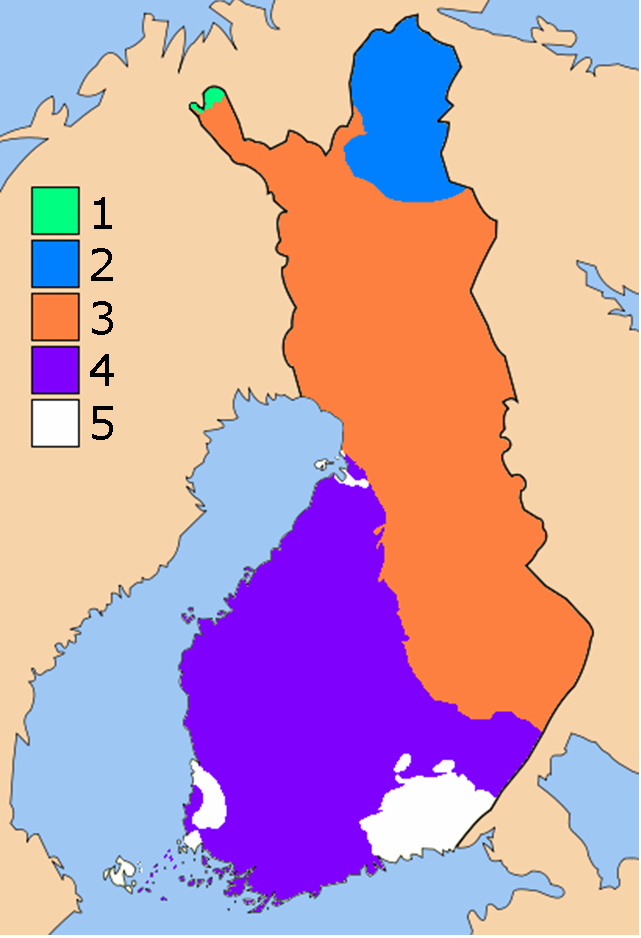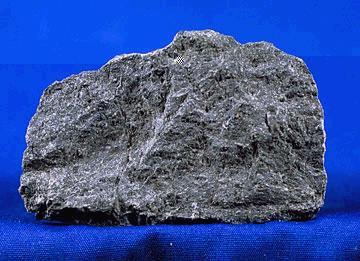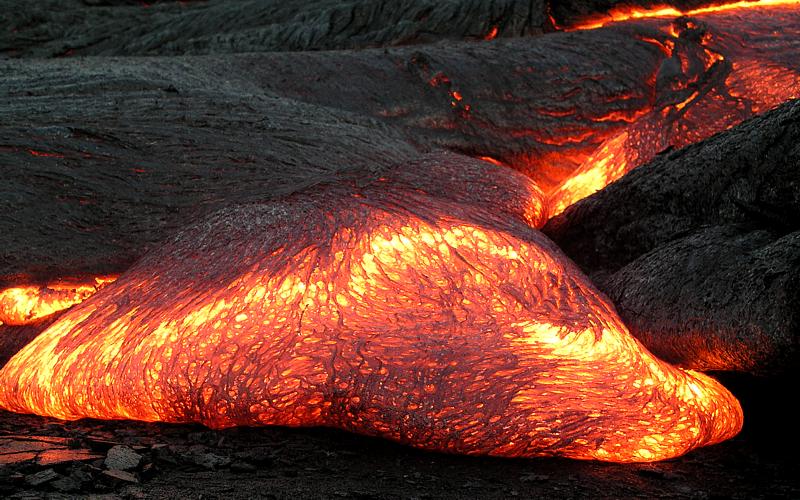|
Ljusdal Batholith
The Ljusdal Batholith is a group of plutons in central Sweden formed during the Svecofennian orogeny. The batholith occupies a NW-SE elongated area of c. 130 x 100 km covering most of Hälsingland. The Ljusdal Bathoilith is mostly made up of granitoids with lesser amounts of mafic intrusions. The plutons of the batholith crystallized from magma 1840 to 1860 million years ago in Paleoproterozoic times at an ancient convergent boundary A convergent boundary (also known as a destructive boundary) is an area on Earth where two or more Plate tectonics, lithospheric plates collide. One plate eventually slides beneath the other, a process known as subduction. The subduction zone can .... References {{geology-stub Batholiths of Europe Geography of Gävleborg County Geology of Sweden Paleoproterozoic magmatism ... [...More Info...] [...Related Items...] OR: [Wikipedia] [Google] [Baidu] |
Pluton (geology)
In geology, an igneous intrusion (or intrusive body or simply intrusion) is a body of intrusive igneous rock that forms by crystallization of magma slowly cooling below the surface of the Earth. Intrusions have a wide variety of forms and compositions, illustrated by examples like the Palisades Sill of New York and New Jersey; the Henry Mountains of Utah; the Bushveld Igneous Complex of South Africa; Shiprock in New Mexico; the Ardnamurchan intrusion in Scotland; and the Sierra Nevada Batholith of California. Because the solid country rock into which magma intrudes is an excellent insulator, cooling of the magma is extremely slow, and intrusive igneous rock is coarse-grained (phaneritic). Intrusive igneous rocks are classified separately from extrusive igneous rocks, generally on the basis of their mineral content. The relative amounts of quartz, alkali feldspar, plagioclase, and feldspathoid is particularly important in classifying intrusive igneous rocks. Intrusions must ... [...More Info...] [...Related Items...] OR: [Wikipedia] [Google] [Baidu] |
Svecofennian Orogeny
The Svecofennian orogeny is a series of related orogenies that resulted in the formation of much of the continental crust in what is today Sweden and Finland plus some minor parts of Russia. The orogenies lasted from about 2000 to 1800 million years ago during the Paleoproterozoic Era. The resulting orogen is known as the Svecofennian orogen or Svecofennides. To the west and southwest the Svecofennian orogen limits with the generally younger Transscandinavian Igneous Belt. It is assumed that the westernmost fringes of the Svecofennian orogen have been reworked by the Sveconorwegian orogeny just as the western parts of the Transscandinavian Igneous Belt has. The Svecofennian orogeny involved the accretion of numerous island arcs in such manner that the pre-existing craton grew with this new material from what is today northeast to the southwest. The accretion of the island arcs was also related to two other processes that occurred in the same period; the formation of magma that ... [...More Info...] [...Related Items...] OR: [Wikipedia] [Google] [Baidu] |
Hälsingland
Hälsingland (), sometimes referred to as Helsingia in English, is a historical province or ''landskap'' in central Sweden. It borders Gästrikland, Dalarna, Härjedalen, Medelpad and the Gulf of Bothnia. It is part of the land of Norrland. Administration The traditional provinces of Sweden serve no administrative or political purpose, but are historical and cultural entities. In the case of Hälsingland the province constitutes the northern part of the ''län'' ('administrative county') Gävleborg County. Minor parts of the province are in Jämtland County and in Västernorrland County. The following municipalities have their seats in Hälsingland: * Bollnäs * Hudiksvall * Ljusdal * Nordanstig * Ovanåker * Söderhamn The six largest settlements are: * Bollnäs * Hudiksvall * Söderhamn * Ljusdal * Edsbyn * Iggesund Heraldry The coat of arms were granted in 1560 in the era of King Gustav Vasa. At that time, Hälsingland was known for its large scale goat bree ... [...More Info...] [...Related Items...] OR: [Wikipedia] [Google] [Baidu] |
GFF (journal) , a British family-owned c ...
GFF may refer to: Entertainment * Girlfriends Films, an American pornographic studio * Glasgow Film Festival, in Scotland * Gothenburg Film Festival, in Sweden Sports * Gabonese Football Federation * Gambia Football Federation * Georgian Football Federation * Göteborgs FF, Swedish football club * Gothenburg Football Association * Guinean Football Federation * Guyana Football Federation Other uses * ''GFF'' (journal), a geology journal * General feature format, a file format used for describing genes * Göteborgs FyrverkeriFabrik, a Swedish fireworks company * Griffith Airport, in New South Wales, Australia * Griffith railway station, in New South Wales, Australia * Guild of Fine Food The Guild of Fine Food (GFF) is a British family-owned industry journal publisher that covers gourmet food news. It was founded by Bob Farrand in 1992. All five directors are members of the Farrand family. Bob Farrand is the chairman, his son ... [...More Info...] [...Related Items...] OR: [Wikipedia] [Google] [Baidu] |
Granitoid
A granitoid is a generic term for a diverse category of coarse-grained igneous rocks that consist predominantly of quartz, plagioclase, and alkali feldspar. Granitoids range from plagioclase-rich tonalites to alkali-rich syenites and from quartz-poor monzonites to quartz-rich quartzolites. As only two of the three defining mineral groups (quartz, plagioclase, and alkali feldspar) need to be present for the rock to be called a granitoid, foid-bearing rocks, which predominantly contain feldspars but no quartz, are also granitoids. The terms ''granite'' and ''granitic rock'' are often used interchangeably for granitoids; however, granite is just one particular type of granitoid. Granitoids are diverse; no classification system for granitoids can give a complete and unique characterization of the origin, compositional evolution, and geodynamic environment for the genesis of a granitoid. Accordingly, multiple granitoid classification systems have been developed such as those based o ... [...More Info...] [...Related Items...] OR: [Wikipedia] [Google] [Baidu] |
Mafic
A mafic mineral or rock is a silicate mineral or igneous rock rich in magnesium and iron. Most mafic minerals are dark in color, and common rock-forming mafic minerals include olivine, pyroxene, amphibole, and biotite. Common mafic rocks include basalt, diabase and gabbro. Mafic rocks often also contain calcium-rich varieties of plagioclase feldspar. Mafic materials can also be described as ferromagnesian. History The term ''mafic'' is a portmanteau of "magnesium" and "ferric" and was coined by Charles Whitman Cross, Joseph P. Iddings, Louis Valentine Pirsson, and Henry Stephens Washington in 1912. Cross' group had previously divided the major rock-forming minerals found in igneous rocks into ''salic'' minerals, such as quartz, feldspars, or feldspathoids, and ''femic'' minerals, such as olivine and pyroxene. However, micas and aluminium-rich amphiboles were excluded, while some calcium minerals containing little iron or magnesium, such as wollastonite or apatite, were incl ... [...More Info...] [...Related Items...] OR: [Wikipedia] [Google] [Baidu] |
Intrusion (geology)
Intrusive rock is formed when magma penetrates existing rock, crystallizes, and solidifies underground to form '' intrusions'', such as batholiths, dikes, sills, laccoliths, and volcanic necks.Intrusive RocksIntrusive rocks accessdate: March 27, 2017.Igneous intrusive rocks, accessdate: March 27, 2017.Britannica.comintrusive rock , geology , Britannica.com accessdate: March 27, 2017. Intrusion is one of the two ways igneous rock can form. The other is extrusion, such as a volcanic eruption or similar event. An intrusion is any body of intrusive igneous rock, formed from magma that cools and solidifies within the crust of the planet. In contrast, an ''extrusion'' consists of extrusive rock, formed above the surface of the crust. Some geologists use the term plutonic rock synonymously with intrusive rock, but other geologists subdivide intrusive rock, by crystal size, into coarse-grained plutonic rock (typically formed deeper in the Earth's crust in batholiths or stocks ... [...More Info...] [...Related Items...] OR: [Wikipedia] [Google] [Baidu] |
Magma
Magma () is the molten or semi-molten natural material from which all igneous rocks are formed. Magma is found beneath the surface of the Earth, and evidence of magmatism has also been discovered on other terrestrial planets and some natural satellites. Besides molten rock, magma may also contain suspended crystals and gas bubbles. Magma is produced by melting of the mantle or the crust in various tectonic settings, which on Earth include subduction zones, continental rift zones, mid-ocean ridges and hotspots. Mantle and crustal melts migrate upwards through the crust where they are thought to be stored in magma chambers or trans-crustal crystal-rich mush zones. During magma's storage in the crust, its composition may be modified by fractional crystallization, contamination with crustal melts, magma mixing, and degassing. Following its ascent through the crust, magma may feed a volcano and be extruded as lava, or it may solidify underground to form an intrusion, su ... [...More Info...] [...Related Items...] OR: [Wikipedia] [Google] [Baidu] |
Paleoproterozoic
The Paleoproterozoic Era (;, also spelled Palaeoproterozoic), spanning the time period from (2.5–1.6 Ga), is the first of the three sub-divisions ( eras) of the Proterozoic Eon. The Paleoproterozoic is also the longest era of the Earth's geological history. It was during this era that the continents first stabilized. Paleontological evidence suggests that the Earth's rotational rate ~1.8 billion years ago equated to 20-hour days, implying a total of ~450 days per year. Atmosphere Before the enormous increase in atmospheric oxygen, almost all existing lifeforms were anaerobic organisms whose metabolism was based on a form of cellular respiration that did not require oxygen. Free oxygen in large amounts is toxic to most anaerobic organisms. Consequently, most died when the atmospheric free oxygen levels soared in an extinction event called the Great Oxidation Event, which brought atmospheric oxygen levels to up to 10% of their current level. The only creatures that sur ... [...More Info...] [...Related Items...] OR: [Wikipedia] [Google] [Baidu] |
Convergent Boundary
A convergent boundary (also known as a destructive boundary) is an area on Earth where two or more lithospheric plates collide. One plate eventually slides beneath the other, a process known as subduction. The subduction zone can be defined by a plane where many earthquakes occur, called the Wadati–Benioff zone. These collisions happen on scales of millions to tens of millions of years and can lead to volcanism, earthquakes, orogenesis, destruction of lithosphere, and deformation. Convergent boundaries occur between oceanic-oceanic lithosphere, oceanic-continental lithosphere, and continental-continental lithosphere. The geologic features related to convergent boundaries vary depending on crust types. Plate tectonics is driven by convection cells in the mantle. Convection cells are the result of heat generated by the radioactive decay of elements in the mantle escaping to the surface and the return of cool materials from the surface to the mantle. These convection cells brin ... [...More Info...] [...Related Items...] OR: [Wikipedia] [Google] [Baidu] |
Batholiths Of Europe
A batholith () is a large mass of intrusive igneous rock (also called plutonic rock), larger than in area, that forms from cooled magma deep in Earth's crust. Batholiths are almost always made mostly of felsic or intermediate rock types, such as granite, quartz monzonite, or diorite (see also ''granite dome''). Formation Although they may appear uniform, batholiths are in fact structures with complex histories and compositions. They are composed of multiple masses, or ''plutons'', bodies of igneous rock of irregular dimensions (typically at least several kilometers) that can be distinguished from adjacent igneous rock by some combination of criteria including age, composition, texture, or mappable structures. Individual plutons are solidified from magma that traveled toward the surface from a zone of partial melting near the base of the Earth's crust. Traditionally, these plutons have been considered to form by ascent of relatively buoyant magma in large masses called ''p ... [...More Info...] [...Related Items...] OR: [Wikipedia] [Google] [Baidu] |
Geography Of Gävleborg County
Geography (from Greek: , ''geographia''. Combination of Greek words ‘Geo’ (The Earth) and ‘Graphien’ (to describe), literally "earth description") is a field of science devoted to the study of the lands, features, inhabitants, and phenomena of Earth. The first recorded use of the word γεωγραφία was as a title of a book by Greek scholar Eratosthenes (276–194 BC). Geography is an all-encompassing discipline that seeks an understanding of Earth and its human and natural complexities—not merely where objects are, but also how they have changed and come to be. While geography is specific to Earth, many concepts can be applied more broadly to other celestial bodies in the field of planetary science. One such concept, the first law of geography, proposed by Waldo Tobler, is "everything is related to everything else, but near things are more related than distant things." Geography has been called "the world discipline" and "the bridge between the human and ... [...More Info...] [...Related Items...] OR: [Wikipedia] [Google] [Baidu] |







